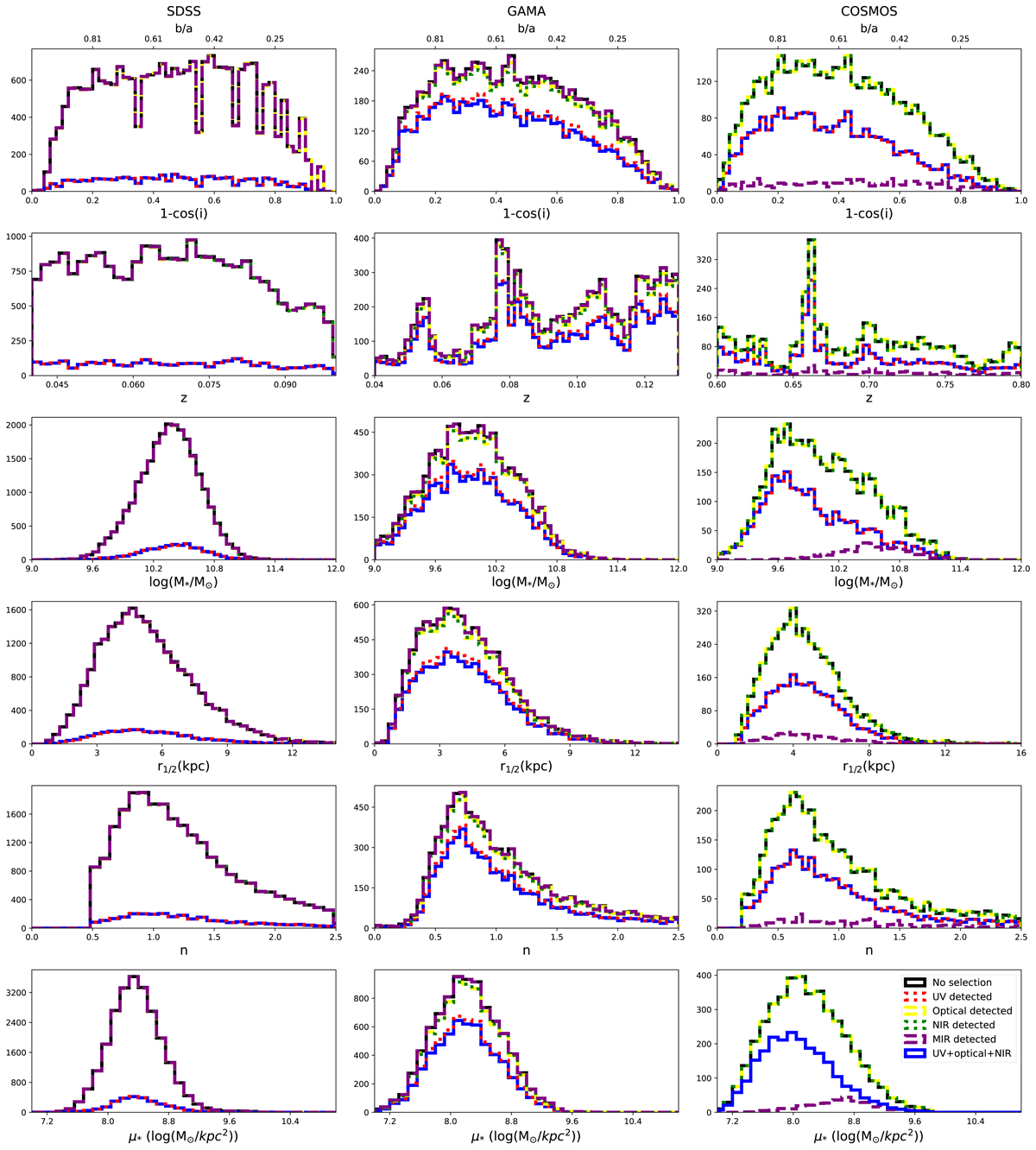Fig. 1.

Download original image
Distributions of the inclination corrected properties of star-forming galaxies in the three galaxy datasets SDSS, GAMA, and COSMOS, based on the different rest-frame detection criteria. The criteria are: (1) the galaxy is detected in at least one band (black), (2) the galaxy is detected in at least one UV band, one optical, one NIR, and one MIR band with S/N > 3 (blue), (3) the galaxy is detected in at least one UV band with S/N > 3 (red), (4) the galaxy is detected in at least one optical band with S/N > 3 (yellow), (5) the galaxy is detected in at least one NIR band with S/N > 3 (green), (6) the galaxy is detected in at least one MIR band with S/N > 3 (purple). The properties are, from top to bottom, inclination 1 − cos(i), redshift z, stellar mass log(M*), half-light radius r1/2, Sérsic index n and stellar mass surface density μ*. In general, the UV selection affects the number of galaxies detected in all samples. Most of the differences in selections are not visible, as the distributions overlap with each other. There is a bias toward more massive galaxies when requiring a MIR-detection in COSMOS.
Current usage metrics show cumulative count of Article Views (full-text article views including HTML views, PDF and ePub downloads, according to the available data) and Abstracts Views on Vision4Press platform.
Data correspond to usage on the plateform after 2015. The current usage metrics is available 48-96 hours after online publication and is updated daily on week days.
Initial download of the metrics may take a while.


